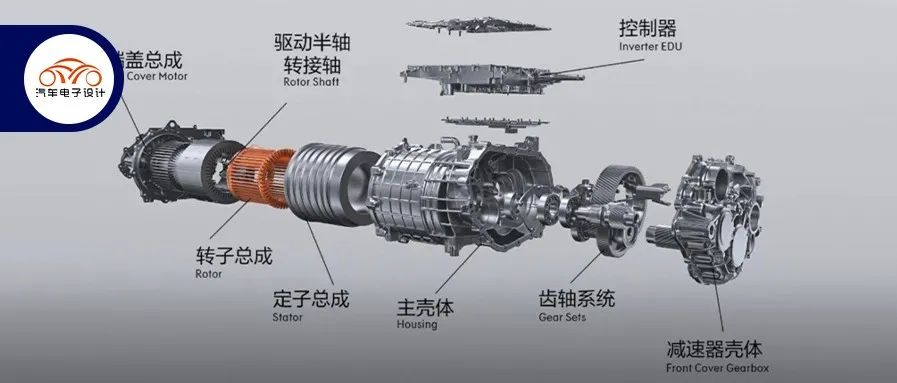Author: Zhu Yulong
In the electric drive system of ZEEKR 001, Jidec and Weirui produced two different systems. In the published plan, a total power of 400 kW is achieved through dual motor configuration, which is considered sufficient for high-speed driving.
After a year of sales, the disassembly and analysis of this system are gradually proceeding. Here are some key points for brief analysis.

As ZEEKR replaces the Qualcomm 8155 chip, it addresses the shortcoming of the car computer system. The overall retail sales have been performing well. This is a good example for traditional car companies to move towards high-end new energy vehicle production. ZEEKR 001 sold 6007 units in 2021 and 36,642 units from January to September 2022. In the current new energy vehicle sales environment, this is considered as a counter-trend grab for market share.
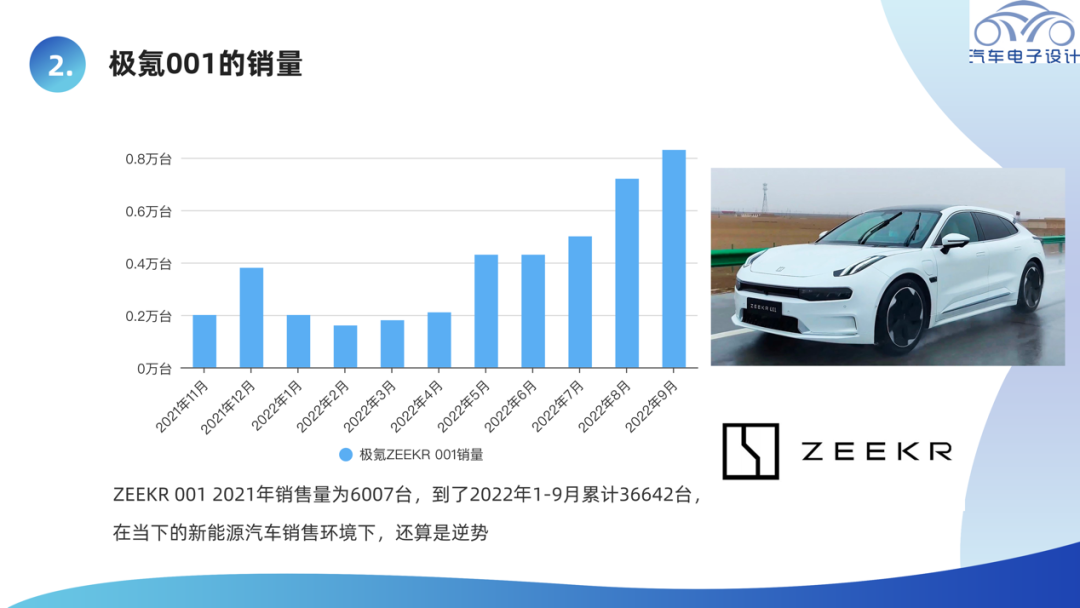
Nidec’s Electric Drive Products
In 2020, Nidec, a Japanese electric motor company, announced the launch of two new products for electric vehicle drive axles – the Ni200Ex 200kW electric drive system for mid-to-high-end vehicles and the Ni50Ex 50kW electric drive system for mid-to-low-end vehicles. Ni200Ex is the third product in Nidec’s E-Axle series, which is scheduled to begin mass production in 2023. In order to meet the requirement of the Zeekr 001, a high-end electric vehicle brand, Nidec pushed forward the production plan and began mass production in the second half of 2021. This is also a requirement that suppliers must meet in the fiercely competitive new energy vehicle market in China.
Nidec’s E-Axle consists of a motor, a gearbox, and an inverter, with the motor, inverter, and differential integrated into a single three-axis gearbox. In the Ni200Ex model, the layout of the entire control board is L-shaped and the MCU of the main control board still uses Renesas Electronics. Nidec continues to adopt an independent IGBT gate drive circuit board.
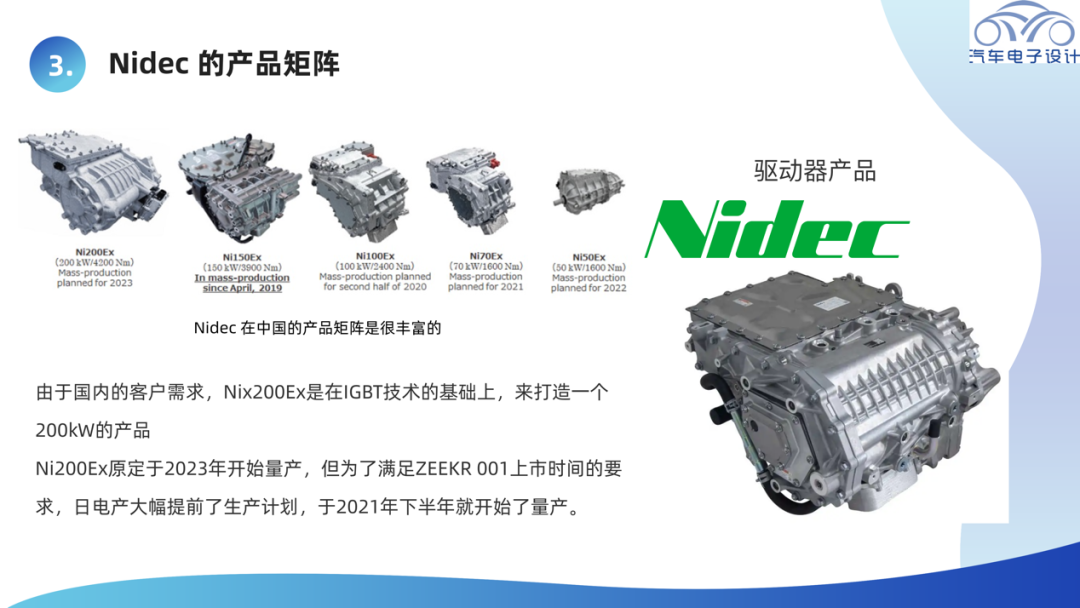
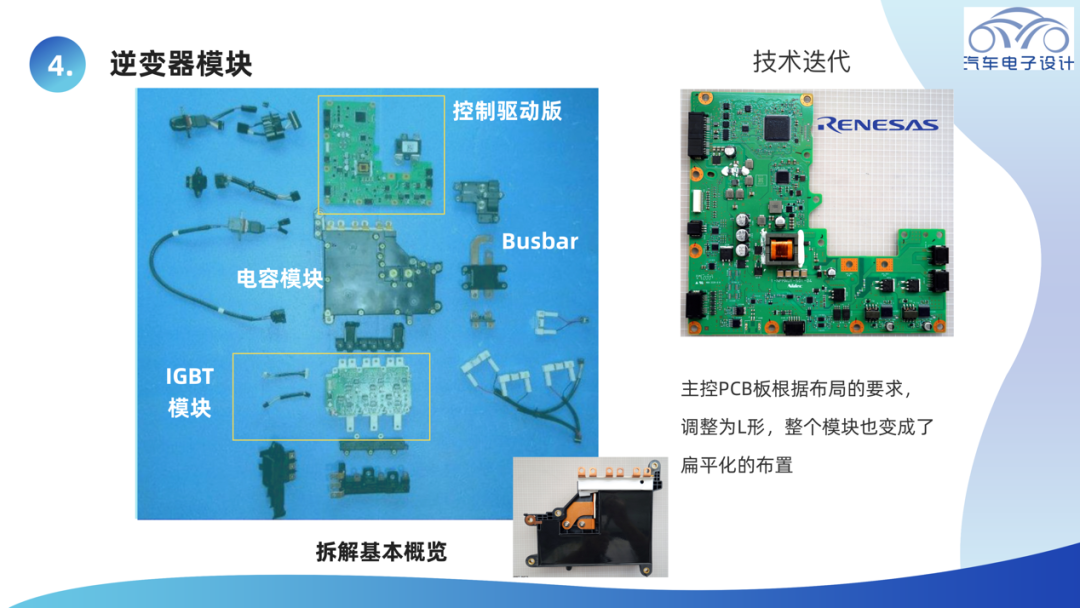 Ni200Ex adopts Infineon IGBT (replacing the previous Hitachi IGBT), with a directly cooled IGBT module and an integrated power module heat sink. The inverter housing is in direct contact with the back heat sink needle through a cooling waterway. The IGBT gate drive board is designed by Nidec, using Rohm devices. In terms of localization, Nidec uses 700μF film capacitors from Faraday Electronics, matching the layout shape of the inverter, instead of the 1200μF film capacitors from Nichicon previously used, for cost optimization.
Ni200Ex adopts Infineon IGBT (replacing the previous Hitachi IGBT), with a directly cooled IGBT module and an integrated power module heat sink. The inverter housing is in direct contact with the back heat sink needle through a cooling waterway. The IGBT gate drive board is designed by Nidec, using Rohm devices. In terms of localization, Nidec uses 700μF film capacitors from Faraday Electronics, matching the layout shape of the inverter, instead of the 1200μF film capacitors from Nichicon previously used, for cost optimization.
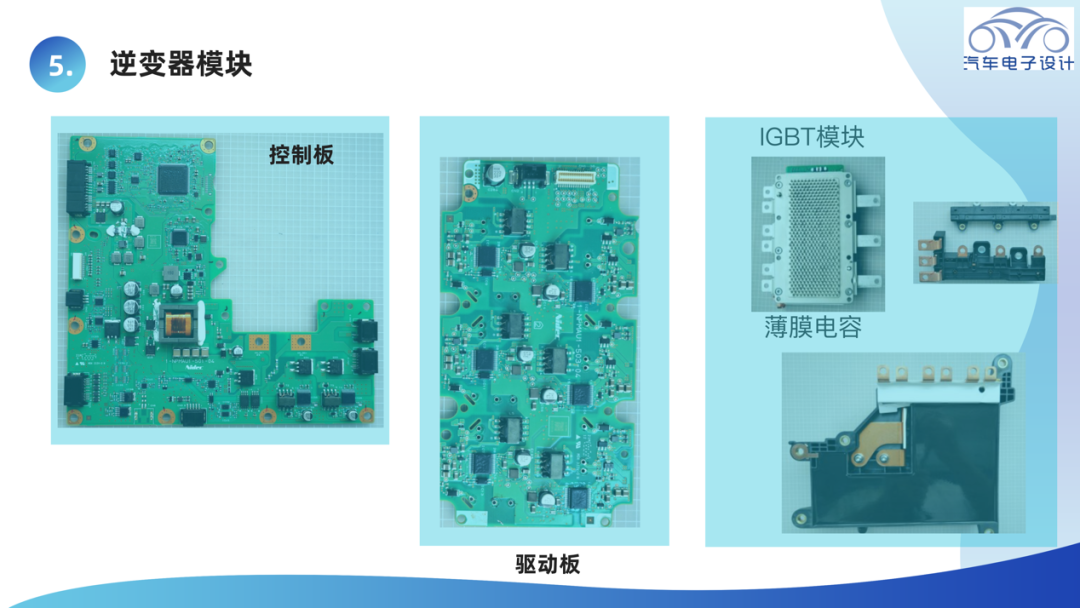
Nidec Electric Drive Products
On ExtremeTech, the two routes taken by Weir’s flat wire and Nidec’s circular wire are different. Although Ni200Ex and the previous motor have the same winding method and fixing method, Ni200Ex adopts a completely new design, with a change in cross-sectional shape and a reduction in the outer diameter of the stator, while maintaining the output power specifications and prioritizing layout. This design mainly reduces the unit height and the height of the drive engine hood, ensuring the luggage compartment volume of the rear-wheel drive.
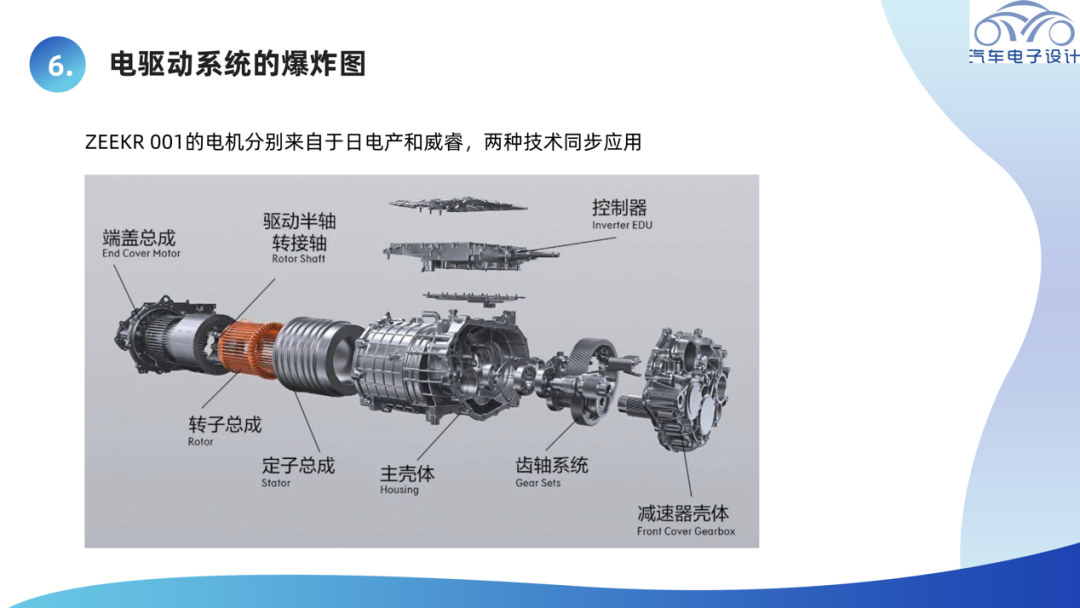
Stator: Ni200Ex’s stator uses an inserted distributed winding (48 slots), which is fixed on the housing by four bolts. The stator adopts traditional inserted distributed winding, and the winding process uses a box-type insertion method to insert the electromagnetic wire (enamel wire) into the box, which improves the space utilization.Rotor: The length of the rotor is 188mm. The magnetic poles are arranged in a ∇3 configuration and have an 8-degree skewed slot to reduce vibration.

Summary: The writing is a bit rough, for your reference. Strictly speaking, the world is moving towards flat wire to increase power density and efficiency. As for the technological differences in electric drives, each enterprise that invests resources is almost the same. Later, we will talk about the 144kwh battery of the Polestar 009.
This article is a translation by ChatGPT of a Chinese report from 42HOW. If you have any questions about it, please email bd@42how.com.
